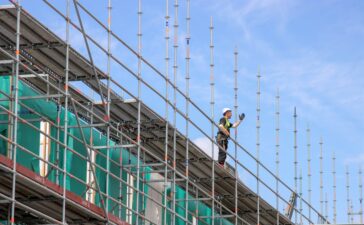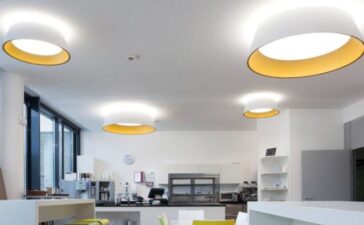Motion detectors are a useful addition to home security systems. These devices work by triggering the alarm system every time an intruder trespasses into their detection range. For this reason, they are useful in monitoring outdoors, especially when nobody is home.
Despite their effectiveness, motion sensors can be quite challenging to install. A poor installation often causes a high frequency of false alarms, as the detector can mistakenly identify harmless objects as intruders.
These are some of the common installation mistakes that you should avoid when setting up your motion detector.
Avoid Ventilation and Air Conditioning Ducts
If you are installing motion sensors, ensure that it is at least three feet away from an air conditioner. It is even better to install it in the opposite direction. The reason for this is that ventilation ducts blow a column of air that may trigger the motion sensors and cause a false alarm.
Copyright: Unsplash I License: CCO Public Domain
Beware of Glossy Surfaces
Glossy surfaces can reflect infrared energy, which then triggers the motion sensor. During installation, confirm that there are no glossy surfaces in the sensor’s detection range, as this increase the probability of false alarms.
Some of the glossy surfaces you should avoid include mirrors, windows, and floors and countertops with a glossy finish. You should also ensure that sunlight or other sources of infrared do not reflect off these glossy surfaces, especially if they are within range.
Avoid Hot Rooms
Another common mistake many people commit when installing motion sensors is placing them in hot rooms. If you place a motion sensor in a room whose temperatures regularly go beyond 95oF, it will affect its ability to detect. Furthermore, the excess heat means that the sensor would not be able to differentiate the high temperature from an intruder.
Mounting
The way you mount your motion detector has a significant impact on its effectiveness. Ensure that you fit the sensor on a solid surface and that it remains immobile during operation. If the motion sensor vibrates when running, it is likely to detect a change in energy, which can trigger a false alarm.
Avoid Areas with Moving Objects
Moving objects in the detection range can trio the motion sensor. This includes anything that sways or moves due to air current, as it can cause a change in infrared energy within the field of view. Some of the objects that trigger the alarm include curtains, blinds, plants, hanging banners, and balloons, and so on.
The same applies to an entry door. If the motion sensor is facing a door directly, it might detect the movement of the door before the door can initiate an entry delay. This triggers the alarm. If you have to install the sensor facing the door, configure you control panel to detect the entry delay before tripping the alarm.
Copyright: Unsplash I License: CCO Public Domain
Clear All Obstacles
A motion sensor cannot see through objects. If any obstacles are in the detection range, it significantly reduces the effectiveness of the device. Such barriers include walls, large pieces of furniture, plants, and so on. If an intruder passes behind such obstacles, the motion sensor will not detect them.
Likewise, coating or covering the motion sensors lowers its detection abilities. Always ensure that the lens of the motion sensor is free of dirt and grime.
Mechanical Failure
Similar to other electrical devices, motion detectors are subject to component failure. Some of the major causes of this include power surges, improper use, moisture, and dirt, and so on.
Conclusion
These are the most common challenges and mistakes that people make when adding motion sensors to their home security systems. Avoiding them ensures that your system is not only effective but also less likely to raise a false alarm.
False alarms are more than a nuisance- if the police come to your home for no reason, you are likely to get fined. You would also be inconveniencing other people that need police services.
In addition to avoiding the mistakes mentioned above, always remember to adjust the pulse count on your motion detector. A high pulse count will reduce sensitivity, such that it only trips the alarm if a human or a large animal enters the detection range. This way, you will no longer have concerns about false alarms.





